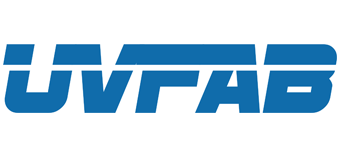About UVFAB
This author has not written his bio yet.
But we are proud to say that UVFAB contributed 12 entries already.
Entries by UVFAB
Ultraviolet Light Kills Coronavirus, But Caution Required!
When used appropriately, ultraviolet radiation is very effective at killing or deactivating pathogens. It can also cause harm to humans, so care must be taken when evaluating new technologies racing to market in a bid to help mitigate the new coronavirus. Facility managers are familiar with UV-C technology, used commonly to keep coils clean of biofilm or used in whole-room sanitation in healthcare. The key component of both of these common applications is that they are in unoccupied space. The UV-C wavelengths emitted by these more common fixtures will cause damage to human eyes and skin.
SARS-CoV-2 UV Dose-Response Behavior by IUVA
SARS-CoV-2 (aka the novel coronavirus) is the virus that causes Coronavirus Disease 2019 (COVID-19). Transmission of COVID-19 appears to be largely associated with airborne particles that may be released by symptomatic or asymptomatic individuals who have been infected by SARS-CoV-2,1 although it is also known that the virus can remain infective on surfaces for as much as 24-72 hours, depending on the material it is contact with,2 so contact with surfaces represents another possible mechanism of disease transfer.
UVFAB Releases Handheld UV-C Disinfection System
UVFAB is proud to introduce the TruClean-400, a new handheld, and portable UV-C disinfection system. This chemical-free system uses 254nm Ultraviolet germicidal irradiation (UVGI) to deactivate microorganisms, fungi, and viruses on plastic, stainless steel, and cardboard surfaces.
300mm (12”) UV Cleaning and UV Surface Treatment System for Semiconductor Wafers
The HELIOS-1200 system is designed to be very compact, lightweight and competitively priced. It includes a high-intensity ultraviolet (UV) grid lamp for increased uniformity as well as a digital process timer which allows more accurate control over the process time.
UV Curing of Adhesives
Light curing adhesives are first and foremost used when a fast cure speed is desired. Often, a full cure is achieved in seconds and that is also the main advantage of this type of adhesive.
6 Ways to Avoid Oxygen Inhibition with UV Curing Adhesives
The majority of light curing adhesives are free radical curing, i.e. acrylic based. These types of adhesives have many benefits (learn more about the differences). One disadvantage, however, can be oxygen inhibition.
